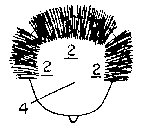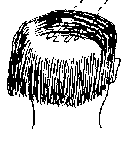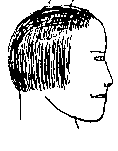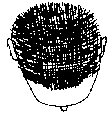Thin on top?
Method of Concealing Partial Baldness
Patent No. 4,022,227
Inventors: Frank and Donald Smith, Orlando, Florida
Issued: May 10, 1977
For those people who are partially bald and wish to cover the bald area hair transplants, hair weaving and hairpieces are the most commonly used solutions. The cost of covering bald areas by one of these methods can range from a few hundred dollars to thousands of dollars depending on a person's choice and financial means. Some of these commonly used bald area coverings require periodic care, which generally cost money.
Obviously a partially bald person without the financial means can not afford the luxury of such hair coverings. This person, therefore, has few options; he can attempt to use his own hair to cover the bald area, but generally most people do not have the ability to properly plan a hair style that will look good, and most attempts result in brushing the hair in one direction over the bald area, or he can allow his baldness to show.
It is the purpose of this invention to provide a method for covering bald areas using only the hair on a person's head. The method here disclosed uses the remaining hair around the bald area on a person's head. The hair in this area must be extra long to cover the bald area. Generally the hair should be about 3 to 4 inches long.
 |
To use the method of this invention, the hair around the bald area is divided into equal portions, generally three such sections will be used. The sections of hair used by this method generally will be to include equal sections on each side of the head and a third section on the back of the head. |
 |
First, you comb over from one side, and hold it in place with hairspray... |
 |
Then, you comb over from the back, and hold that layer in place with hairspray... |
 |
Finally, you comb over from the other side, and hold it in place with hairspray, forming a sort of thatch. The uppermost section can be styled to the person's personal taste. |
Editor's Note: This was one of the first Weird and Wonderful Patents on which we received e-mail, from a woman who said, "Thank You! At last I know what my dentist has been doing all these years!"
Go back for more weird and wonderful patents.